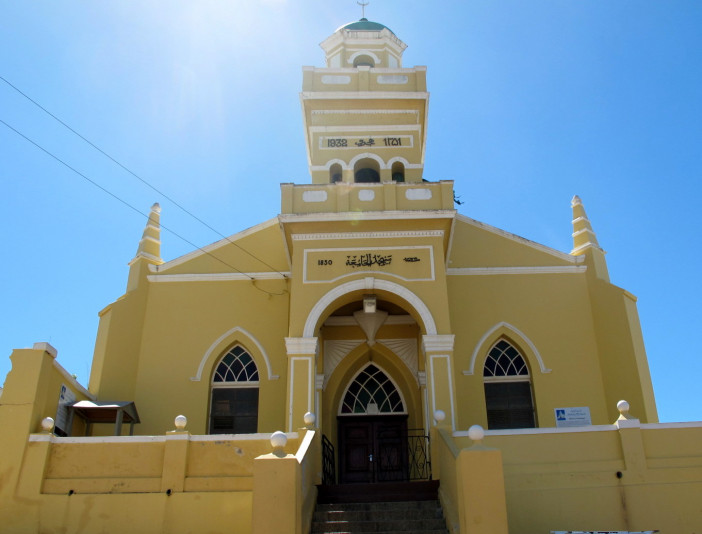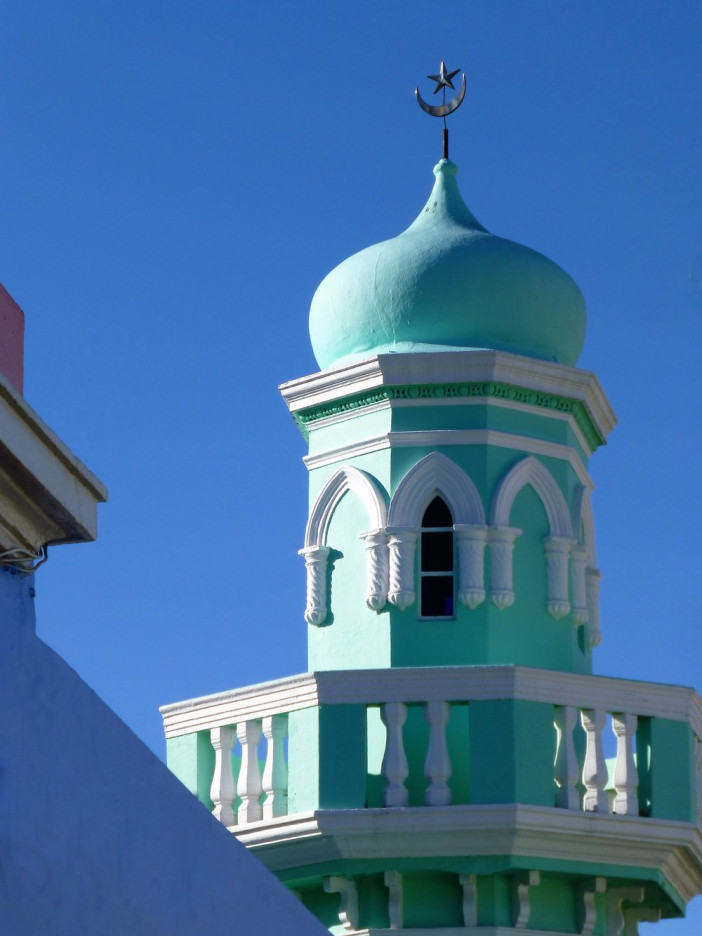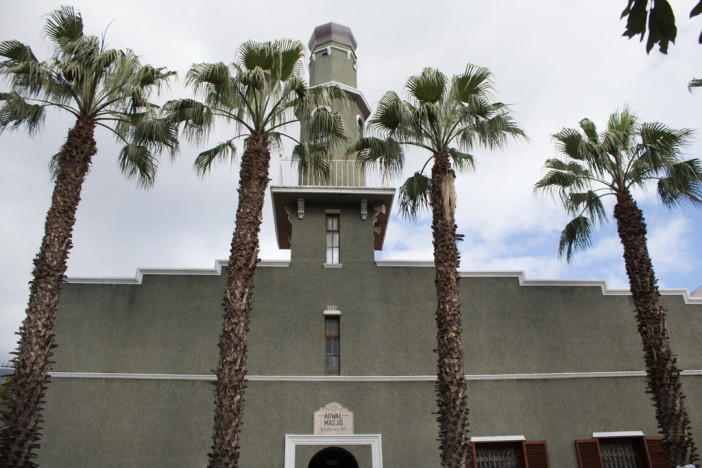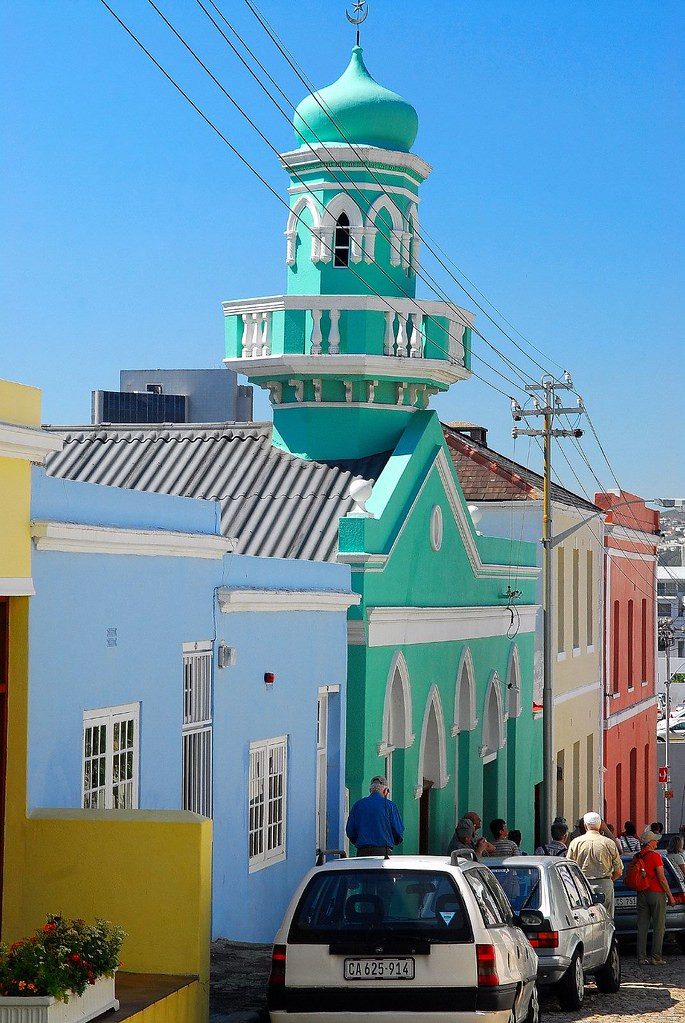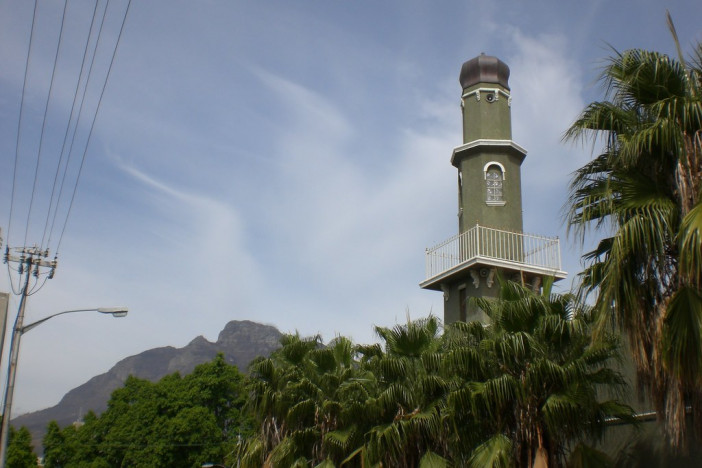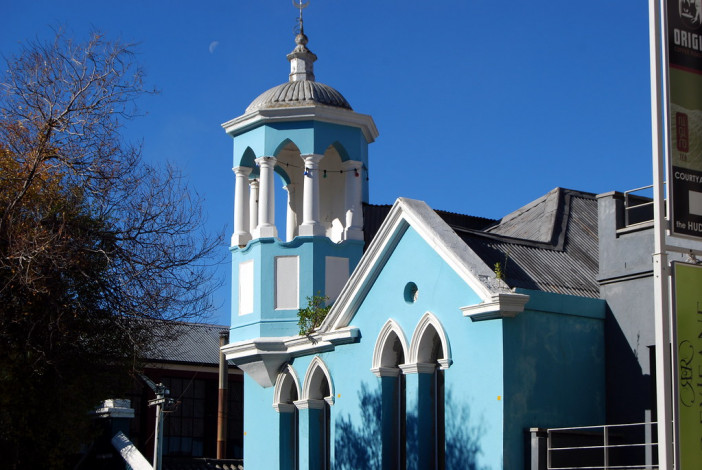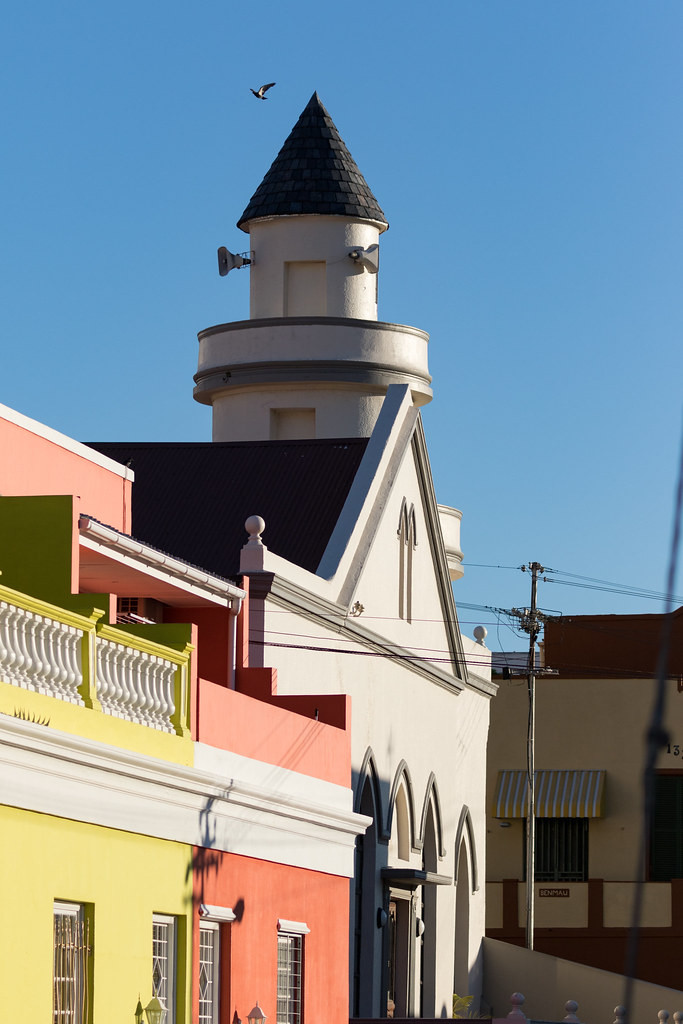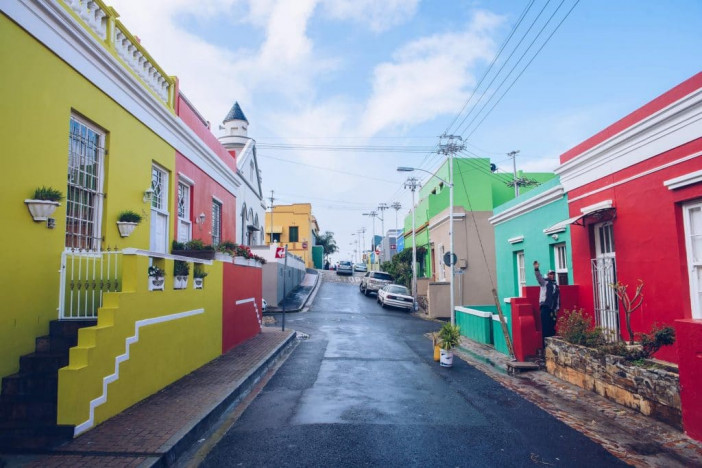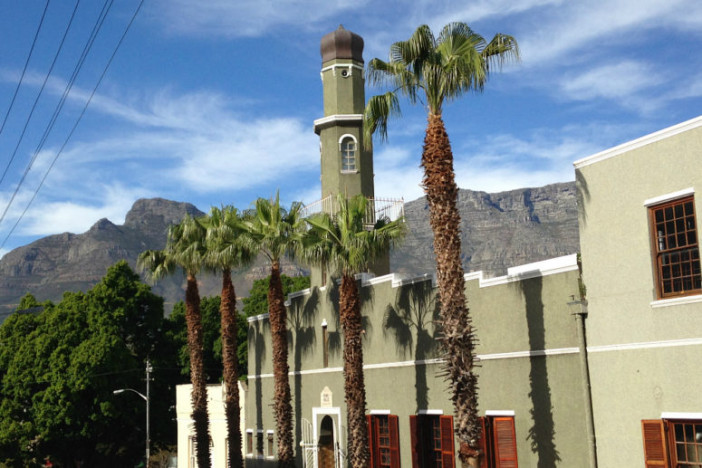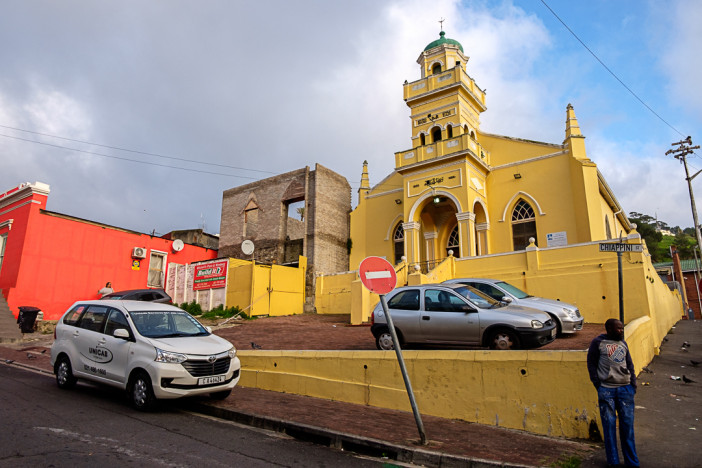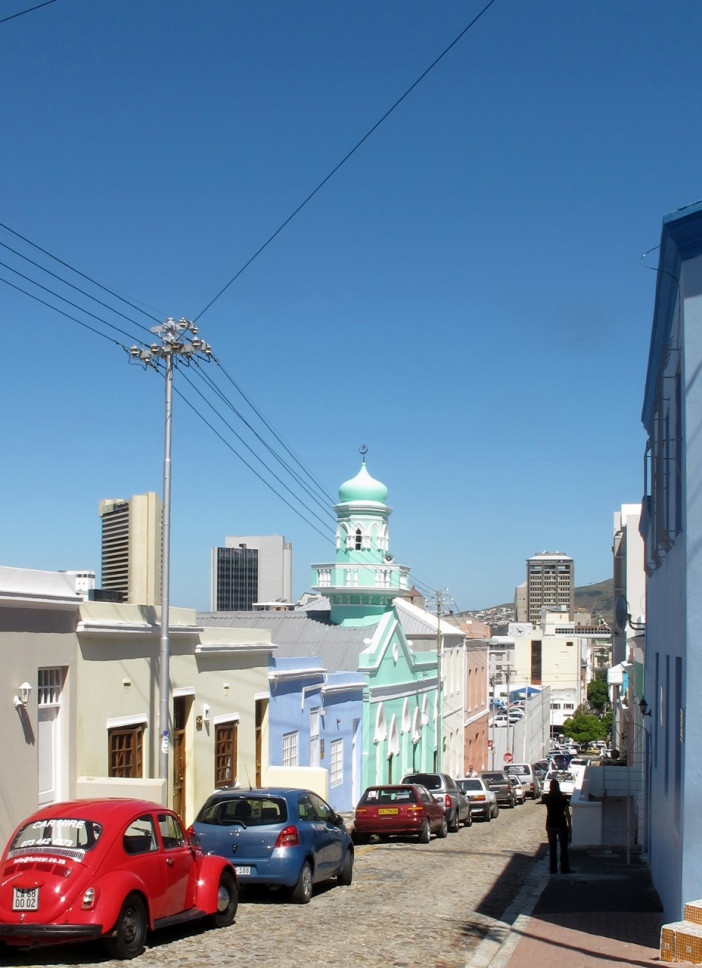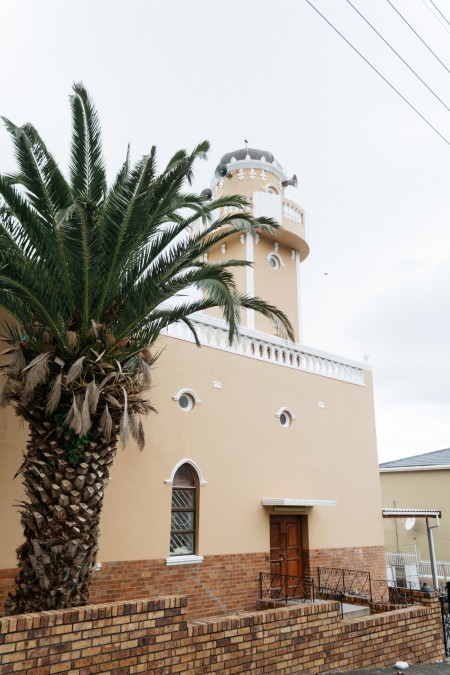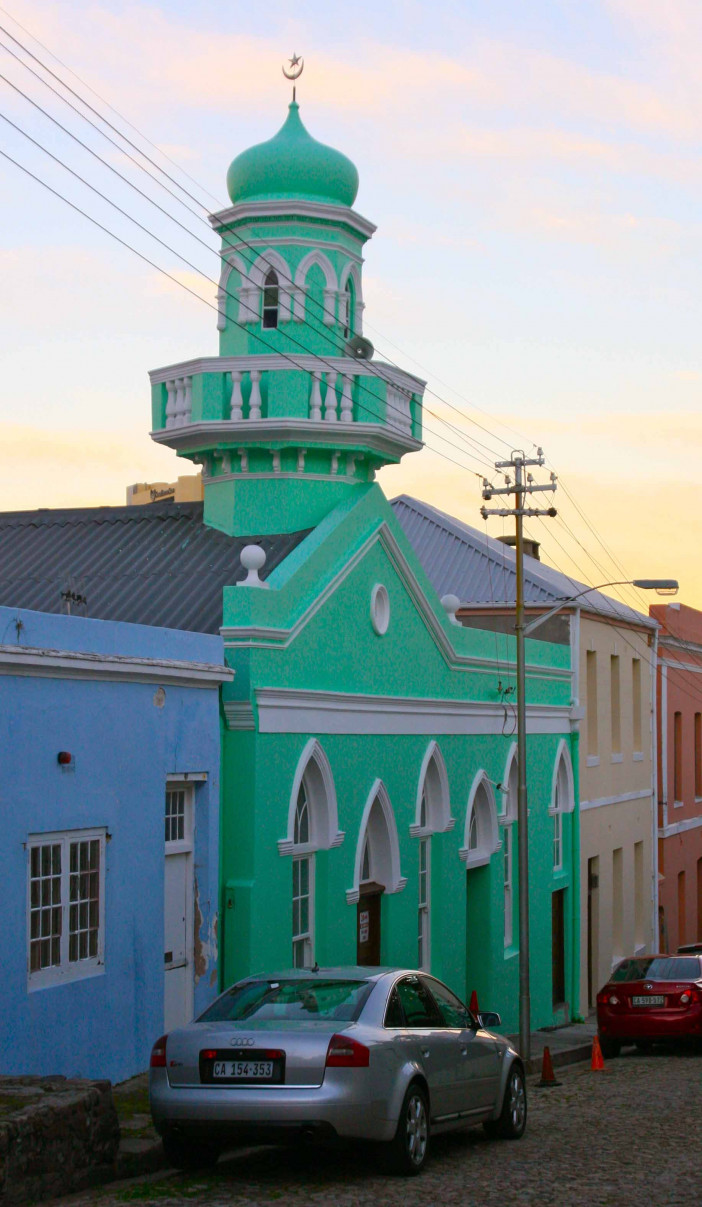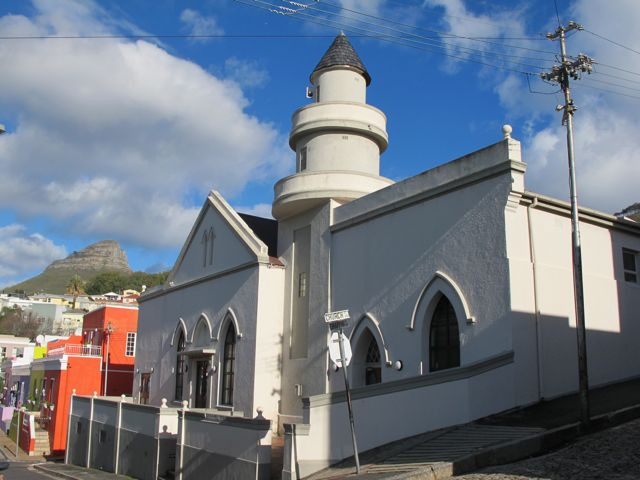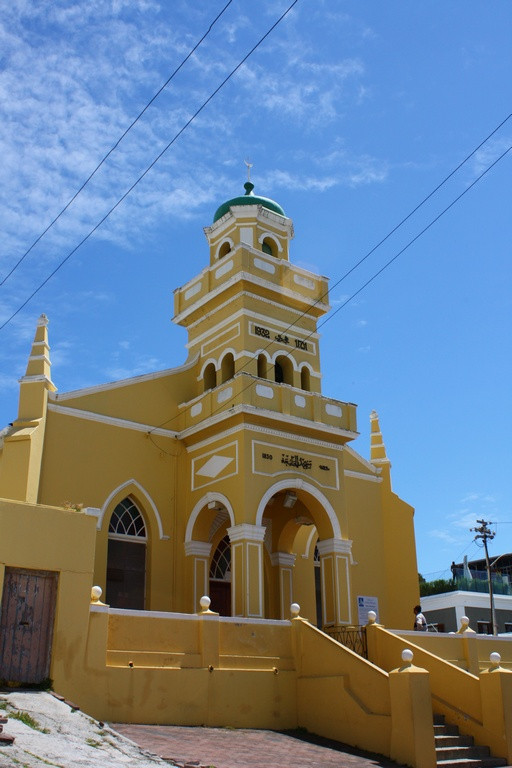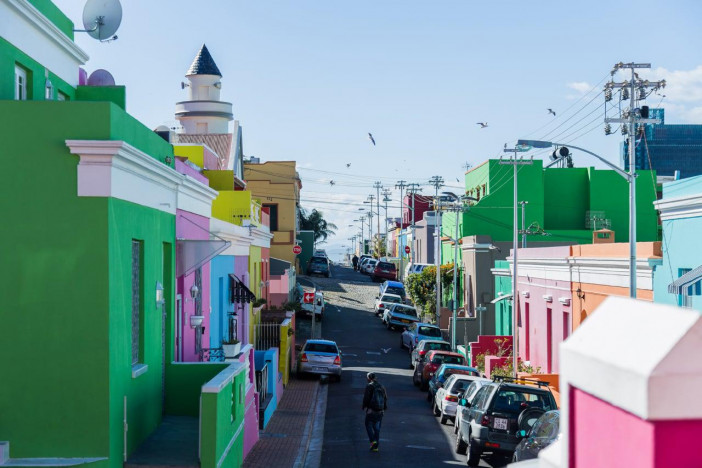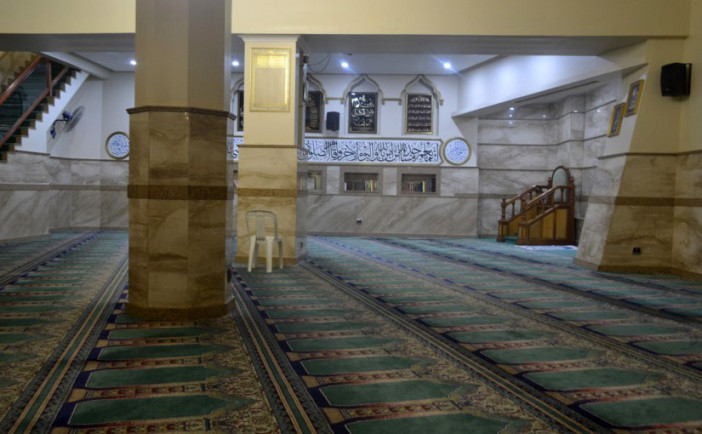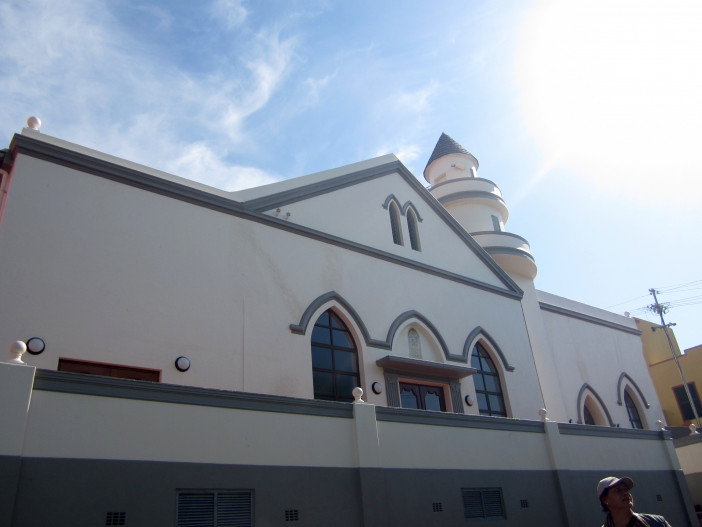Bo-Kaap Mosques
History
Bo-Kaap
Situated at the foot of Signal
Hill, on the fringe of the city center, home to the first mosque in South
Africa and considered the birthplace of Islam in this part of Africa, and
formerly known as the Malay Quarter, the Bo-Kaap’s origins date back to the 1760's
when numerous “huurhuisjes” (rental houses) were built and leased to slaves.
These people were known as Cape Malays, and were brought from Malaysia,
Indonesia and the rest of Africa to work in the Cape.
To this day, the houses are a mix
of Cape Dutch and Georgian architecture, in distinctive multi-coloured rows on
steeply cobbled roads. The choice of colour is said to be attributed to the
fact that while on lease, all the houses had to be white. When this rule was
eventually lifted, and the slaves were allowed to buy the properties, all the
houses were painted bright colours by their owners as an expression of their
freedom. Strict laws against the mixing of races resulted in the
preservation of the Bo-Kaap and its culture. Many of the families in
the Bo-Kaap have been living there for generations.
Today, it is a tourist attraction,
where people visit the museum in the first house ever built in the area, they
visit first mosque, they try Malay food and take cooking courses in it,
visit traditional shops, and walk around to take pretty pictures in the
colorful neighborhood.
Description
Mosques
1. Auwal Mosque (1794): The Auwal Mosque is the first and oldest mosque built in South Africa. This is evident according to very strong oral tradition which also confirms that Imam Abdullah Kadi Abdus Salaam also known as Tuan Guru, who was the first Imam at this Mosque. The Auwal mosque came into existence in 1798 during the first British occupation of the Cape of Good Hope and was the main religious instituting during the years 1804 until 1850. This mosque is also the first to have practiced most of the Cape Muslim traditions. The Auwal Masjid has always been a symbol of the struggle of Cape Muslims for the recognition of Islam and their freedom to worship. The mosque was built on land belonging to the freed slave Coridon van Ceylon. In 1793 Tuan Guru was released from Robben Island, having served a prison sentence of thirteen years. When he established his first madrasah in 1793, the property, a warehouse, was rented by Coridon of Ceylon, the freed slave of Salie van de Kaap. He then made an application to the Cape authorities for a site in Cape Town for the construction of a masjid, but it was refused. An open-air Jumu ‘ah Saldh [Friday congregational prayers] was then held in a disused quarry in Chiappini Street in Cape Town. Tuan Guru, also known as Imam Abdullah, led the Cape Muslims in the Salah. According to Achmat van Bengalen the construction of the Auwal Masjid was made possible through General Craig who, for the first time, permitted Muslims to pray in public in the Cape Colony. The Auwal Masjid, situated in Dorp Street, Cape Town, became the first to be established and is still functioning as the noble founders had intended. It became a center of Muslim communal activity, regulating and patterning their social and religious life.
2. Palm Tree Mosque (1820): The Palm Tree Mosque is the second oldest Mosque in Bo-Kaap and was established in 1820. The Mosque’s location is in Long Street and appears to be a house that was converted into a Mosque. The Mosque is also referred to in some books as the Jan Van Boughies Mosque. The first Imam appointed was Abdoolgamiet van Bengalen.
3. Nurul Islma Mosque (1844): Nurul Islam Mosque is the first mosque in South Africa founded by a congregation of students who studied under the guidance of Imam Achmat van Bengalen. It is the third oldest mosque and is situated in a small lane off Buitengracht Street about one hundred meters from the Auwal mosque. It was founded in 1844 by the younger of Tuan Guru’s sons, Imam Abdol Rauf. The Mohamedan Shafee Congregation was established round about the 1830’s by Abdol Rakiep together with his brother Abdol Rauf, the three sons of Achmat van Bengalen and Baderoen. It was only 27 February 1844 that the Mohamedan Shafee Congregation received a transference of property to build the mosque with Abdol Rauf as Imam.
4. Jamia Mosque (1850): This Shafee mosque was the first mosque which was specially granted land for a mosque site and hence is also known as Queen Victoria Mosque as patronage of the British Crown. It is the fourth mosque and is situated on the corner of Chiappini and Castle Streets adjacent to the disused stone quarry where the first Jumu-ah (Friday Congregational prayer) was read in South Africa in 1790. It is the biggest mosque in Bo-Kaap and the fifth eldest in South Africa. The minaret was constructed in 1932 and later enlarged in 1914 to accommodate the Hiempu. The Jamia Mosque is the main Shafee Jumu-ah Mosque in Bo-Kaap and serves as a reminder of the Cape Muslims in the Battle of Blaauwberg and the Battle of the Axe, in order for the construction site for a mosque to be acquired.
5. Mosque Shafee (1859): On 3 September 1859 the first piece of land was acquired by Imam Hadjie, who was a trustee of the Mohamedan community and took the transfer of a piece of land situated on the corner of Helliger Lane and Chiappini Street. The original name of the mosque was The Mosque of Imam Hadjie and was the fifth mosque constructed in Bo-Kaap.
6. Hanafee mosque (1881): The Hanafee Mosque is situated at the corner of Dorp and Long Street and was constructed by Abubakr Effendi. The first Imam was Achmat Sedick.
7. Boorhaanol mosque (1884): Boorhaanol Islam was built in 1884 and is situated in Longmarket Street. It was originally known as Pilgrim Mosque. This was where the first minaret was built in Cape Town and was made of wood. After it blew off in a storm in the late 1930’s it was replaced by a concrete structure. It was then decided to renovate the entire mosque. It was during these renovations that the name of the mosque was changed to Masjied Boorhaanol Islam in 1970.It is the only mosque in Cape Town which was declared a national monument. The Boorhaanol mosque was also very much concerned with the upliftment of the community and established the Boorhaanol Recreational Movement on 7 October 1966. This was initiated by Imam Abdurahmaan Bassier the Imam of the mosque at that time.
8. Quawatul Islam Mosque (1892): The eighth Mosque to be constructed in BoKaap is Quawatul Islam Mosque in Loop Street. The Mosque was built because of the large influx of Indian Muslims to Cape Town. By the late nineteenth century, the majority of the Muslim people residing in BoKaap were Shafee due their culture and their rooted beginnings. This did cause conflict as the Hanafee followers would not allow marriages to take place between themselves and Shafee followers. But today it is possible, and that struggle is over.
9. Nurul Mohamadia Mosque (1899): The Mosque was constructed in 1899 in Vos Street. The location is described as between Strand, Waterkant, Hudson and Vos Street. The land was donated by Hadjie Salie Jacob to the Nurul Mohamedia Congregation. It was the first Mosque in BoKaap with a proper constitution defining the rights of the Imam and the members of the Mosque. It was also the first Bo-Kaap not involved in the Supreme Court litigation.
10. Nurul Huda Mosque (1958): Situated near the Schotsches Kloof Flats in Leeuwen Street is the Nurul Huda Mosque constructed in 1958. A prayer room was constructed by the Jassiem Family is 1939. Madressa classes are also held.
Details
الموقع
Cape Town, 8001, South Africa
تاريخ البناء
1794 - 1958
الرسومات المعمارية
الخريطة
History
Bo-Kaap
Situated at the foot of Signal
Hill, on the fringe of the city center, home to the first mosque in South
Africa and considered the birthplace of Islam in this part of Africa, and
formerly known as the Malay Quarter, the Bo-Kaap’s origins date back to the 1760's
when numerous “huurhuisjes” (rental houses) were built and leased to slaves.
These people were known as Cape Malays, and were brought from Malaysia,
Indonesia and the rest of Africa to work in the Cape.
To this day, the houses are a mix
of Cape Dutch and Georgian architecture, in distinctive multi-coloured rows on
steeply cobbled roads. The choice of colour is said to be attributed to the
fact that while on lease, all the houses had to be white. When this rule was
eventually lifted, and the slaves were allowed to buy the properties, all the
houses were painted bright colours by their owners as an expression of their
freedom. Strict laws against the mixing of races resulted in the
preservation of the Bo-Kaap and its culture. Many of the families in
the Bo-Kaap have been living there for generations.
Today, it is a tourist attraction,
where people visit the museum in the first house ever built in the area, they
visit first mosque, they try Malay food and take cooking courses in it,
visit traditional shops, and walk around to take pretty pictures in the
colorful neighborhood.
Description
Mosques
1. Auwal Mosque (1794): The Auwal Mosque is the first and oldest mosque built in South Africa. This is evident according to very strong oral tradition which also confirms that Imam Abdullah Kadi Abdus Salaam also known as Tuan Guru, who was the first Imam at this Mosque. The Auwal mosque came into existence in 1798 during the first British occupation of the Cape of Good Hope and was the main religious instituting during the years 1804 until 1850. This mosque is also the first to have practiced most of the Cape Muslim traditions. The Auwal Masjid has always been a symbol of the struggle of Cape Muslims for the recognition of Islam and their freedom to worship. The mosque was built on land belonging to the freed slave Coridon van Ceylon. In 1793 Tuan Guru was released from Robben Island, having served a prison sentence of thirteen years. When he established his first madrasah in 1793, the property, a warehouse, was rented by Coridon of Ceylon, the freed slave of Salie van de Kaap. He then made an application to the Cape authorities for a site in Cape Town for the construction of a masjid, but it was refused. An open-air Jumu ‘ah Saldh [Friday congregational prayers] was then held in a disused quarry in Chiappini Street in Cape Town. Tuan Guru, also known as Imam Abdullah, led the Cape Muslims in the Salah. According to Achmat van Bengalen the construction of the Auwal Masjid was made possible through General Craig who, for the first time, permitted Muslims to pray in public in the Cape Colony. The Auwal Masjid, situated in Dorp Street, Cape Town, became the first to be established and is still functioning as the noble founders had intended. It became a center of Muslim communal activity, regulating and patterning their social and religious life.
2. Palm Tree Mosque (1820): The Palm Tree Mosque is the second oldest Mosque in Bo-Kaap and was established in 1820. The Mosque’s location is in Long Street and appears to be a house that was converted into a Mosque. The Mosque is also referred to in some books as the Jan Van Boughies Mosque. The first Imam appointed was Abdoolgamiet van Bengalen.
3. Nurul Islma Mosque (1844): Nurul Islam Mosque is the first mosque in South Africa founded by a congregation of students who studied under the guidance of Imam Achmat van Bengalen. It is the third oldest mosque and is situated in a small lane off Buitengracht Street about one hundred meters from the Auwal mosque. It was founded in 1844 by the younger of Tuan Guru’s sons, Imam Abdol Rauf. The Mohamedan Shafee Congregation was established round about the 1830’s by Abdol Rakiep together with his brother Abdol Rauf, the three sons of Achmat van Bengalen and Baderoen. It was only 27 February 1844 that the Mohamedan Shafee Congregation received a transference of property to build the mosque with Abdol Rauf as Imam.
4. Jamia Mosque (1850): This Shafee mosque was the first mosque which was specially granted land for a mosque site and hence is also known as Queen Victoria Mosque as patronage of the British Crown. It is the fourth mosque and is situated on the corner of Chiappini and Castle Streets adjacent to the disused stone quarry where the first Jumu-ah (Friday Congregational prayer) was read in South Africa in 1790. It is the biggest mosque in Bo-Kaap and the fifth eldest in South Africa. The minaret was constructed in 1932 and later enlarged in 1914 to accommodate the Hiempu. The Jamia Mosque is the main Shafee Jumu-ah Mosque in Bo-Kaap and serves as a reminder of the Cape Muslims in the Battle of Blaauwberg and the Battle of the Axe, in order for the construction site for a mosque to be acquired.
5. Mosque Shafee (1859): On 3 September 1859 the first piece of land was acquired by Imam Hadjie, who was a trustee of the Mohamedan community and took the transfer of a piece of land situated on the corner of Helliger Lane and Chiappini Street. The original name of the mosque was The Mosque of Imam Hadjie and was the fifth mosque constructed in Bo-Kaap.
6. Hanafee mosque (1881): The Hanafee Mosque is situated at the corner of Dorp and Long Street and was constructed by Abubakr Effendi. The first Imam was Achmat Sedick.
7. Boorhaanol mosque (1884): Boorhaanol Islam was built in 1884 and is situated in Longmarket Street. It was originally known as Pilgrim Mosque. This was where the first minaret was built in Cape Town and was made of wood. After it blew off in a storm in the late 1930’s it was replaced by a concrete structure. It was then decided to renovate the entire mosque. It was during these renovations that the name of the mosque was changed to Masjied Boorhaanol Islam in 1970.It is the only mosque in Cape Town which was declared a national monument. The Boorhaanol mosque was also very much concerned with the upliftment of the community and established the Boorhaanol Recreational Movement on 7 October 1966. This was initiated by Imam Abdurahmaan Bassier the Imam of the mosque at that time.
8. Quawatul Islam Mosque (1892): The eighth Mosque to be constructed in BoKaap is Quawatul Islam Mosque in Loop Street. The Mosque was built because of the large influx of Indian Muslims to Cape Town. By the late nineteenth century, the majority of the Muslim people residing in BoKaap were Shafee due their culture and their rooted beginnings. This did cause conflict as the Hanafee followers would not allow marriages to take place between themselves and Shafee followers. But today it is possible, and that struggle is over.
9. Nurul Mohamadia Mosque (1899): The Mosque was constructed in 1899 in Vos Street. The location is described as between Strand, Waterkant, Hudson and Vos Street. The land was donated by Hadjie Salie Jacob to the Nurul Mohamedia Congregation. It was the first Mosque in BoKaap with a proper constitution defining the rights of the Imam and the members of the Mosque. It was also the first Bo-Kaap not involved in the Supreme Court litigation.
10. Nurul Huda Mosque (1958): Situated near the Schotsches Kloof Flats in Leeuwen Street is the Nurul Huda Mosque constructed in 1958. A prayer room was constructed by the Jassiem Family is 1939. Madressa classes are also held.


